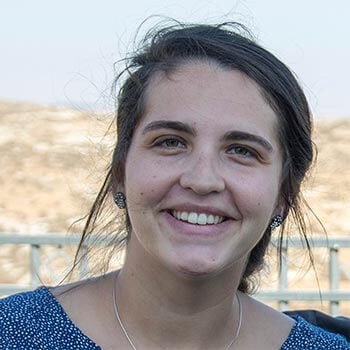As global fisheries plateau and decline due to increasing pressure from climate change, aquaculture can play a major role in feeding the world’s growing population.
However, without addressing social and environmental sustainability, aquaculture will not meet its potential. Currently, very few aquaculture farms, especially small-scale operations, have reached sustainable certifications and assurances.
Recently, we spoke with Tim Moore, Technical Advisor at Resonance, who leads our work with diverse stakeholder partners including Seafood Watch on The Partnership Assurance Model (PAM), an innovative approach to fast tracking sustainable improvements on farms, especially for smallholder operations.
Q&A With Tim Moore, Technical Advisor
In this wide-ranging conversation, we spoke with Tim about why PAM is needed, what makes it different from other verification models, and the future of aquaculture.
Why is the Partnership Assurance Model needed today?
Current ratings, certification, and assurance programs aren’t driving the impact that we need to improve sustainability on farms. Only about 6% of farms, worldwide meet requirements, and most are large-scale operations.
For small-holder farms, which are the majority of producers, there are very few, if any, benefits to meeting certification and assurance requirements. This means farms aren’t making sustainable improvements, which has negative environmental and social impacts, and it doesn’t meet the demands from buyers and customers.
Also, existing programs don’t adequately address social impacts such as human rights, an area that everyone in the industry recognizes we need to confront.
You’ve been involved in the sustainable seafood sector for many years. What makes PAM different from traditional assurance programs?
Most traditional assurance programs are one-size-fits-all approaches that focus on verifying at a farm-by-farm or countrywide level. Rather, PAM takes an area-based approach that’s fully customizable, recognizing that farmers face unique localized challenges that require unique solutions. So we use a human-centered design approach with PAM.
PAM also focuses on finding and reducing assurance costs, resources, and time commitments—areas that have historically been obstacles to farmers’ participation.
We’ve developed new innovative ways that utilize cutting-edge technology to verify and collect data that’s easy for farmers to use and implement, saving them time and money, yet maintaining the integrity and credibility for assurances that buyers and sellers require.
The PAM approach also brings together diverse, cross-sector partners throughout the supply chain including buyers, sellers, feed and other input companies, governments, farmers, cooperatives, and investors to co-invest.
PAM initiatives involve very diverse stakeholders, including many private sector actors. Why are seafood companies, including major buyers joining PAM initiatives?
Many seafood companies, especially food service retailers, have made ambitious commitments to purchase sustainably-sourced products. But there aren’t many options given the lack of verification and assurances in the industry.
Companies are eager to find and support alternative approaches that will result in more sustainability improvements on the farm and assurances that companies—and customers—need.
Although, PAM initiatives are still in the early stages, companies realize this is one of the most promising approaches in the industry, and many companies want to be involved, supporting, and promoting more sustainable impact.
Why is partnership so important in the PAM model?
Aquaculture faces complex challenges that no individual stakeholder in the supply chain can solve alone.
We’re finding success in our pilot projects in Vietnam and India, largely because cross-sector partners have jointly set goals and objectives, and are contributing unique skills, resources, and knowledge, that when combined is leading to innovative and effective solutions.
For example, processors often have connections to the local farmers. NGOs bring technical expertise and training. Governments can advise on regulations and registration processes that farmers need to obtain to legally do business. Buyers create the market and can offer incentives such as long-term contracts that can help encourage farmers to make and verify the sustainability improvements to meet an assurance.
Learn 3 Strategies for Implementing the Partnership Assurance Model
What have you found promising as you’ve worked to refine the PAM model and then test it in Vietnam and India?
The amount of interest, engagement, and support from our private sector partners including Chicken of the Sea, Avanti Frozen Foods, Devi Seafoods, The Cheesecake Factory, Seafresh, Wegmans and Bon Appetit Management, as well as input companies including feed providers.
We’re seeing so many companies join and contribute resources and ideas that I believe it bodes well for our success with PAM in other countries and regions. Ultimately, our mission is to create more sustainable impact in aquaculture, and I’m very pleased with the direction we’re headed.
I also find it promising how willing our partners have been to test and keep innovating on different solutions such as getting the Improvement Verification Platform technology into farmers’ hands, which has reduced verification time from one to four days down to 1-1.5 hours.
Using the PAM approach in Vietnam, already more than 2,000 farmer households have met Seafood Watch’s requirements for their Best Choice (Green) rating.
Finally, we’re already discussing exciting ways to expand and evolve PAM including how to partner with financial institutions to provide innovative financing options for farmers to access the resources they need to make on-the-farm improvements. And we’re exploring how to incorporate a social impact component for assurances.
Driving Sustainable Impact in Aquaculture
Sustainable impact in the aquaculture arena is possible. But it requires new approaches and diverse stakeholders collaborating to find the be solutions.
PAM offers one of the most promising approaches to driving sustainable impact and improving verification and assurances.
To learn more about how you can get involved with an existing PAM initiative or to launch your own, contact us today.




